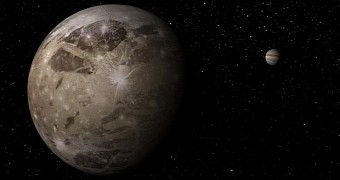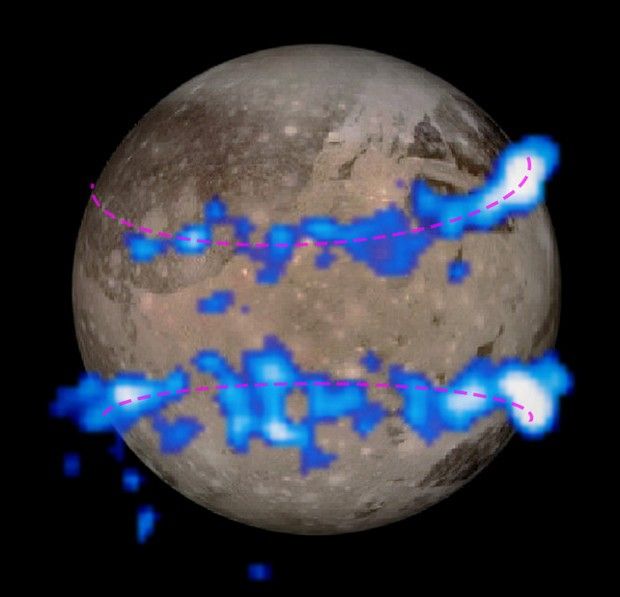Ganymede just got a whole lot cooler. Apart from being Jupiter's largest moon and the absolute biggest natural satellite in our Solar System, as well as the only celestial body of this kind with its own magnetic field, it looks like it also hides a massive ocean under its crust.
Mind you, astronomers have for a long time suspected the presence of such an ocean on Ganymede. Still, this assumption was based on theoretical models alone. Now, new data provided by NASA's Hubble Space Telescope is hailed as the best evidence yet of an underground ocean on this moon.
Using the Hubble Space Telescope to study Ganymede
Because it has its own magnetic field, Ganymede displays aurorae close to its north and its south pole. The appearance of this aurorae, which scientists say are kind of like ribbons made of electrified hot gas shinning bright in the sky above the moon's surface, is influenced by neighboring Jupiter's own magnetic field.
More precisely, NASA astronomers say that, because of its proximity to Jupiter, Ganymede's aurorae move in very specific patterns whenever the planet's magnetic field changes. With the help of the Hubble Space Telescope, researchers managed to study the movement of Ganymede's aurorae in detail.
Data obtained in this manner allowed them to gain a better understanding of the moon's magnetic field. In turn, this information offered them a sneak peek into Ganymede's hidden anatomy. This is because the behavior of a celestial body's magnetic field is influenced by its makeup.
As it turns out, the particularities of Ganymede's magnetic field hint at the presence of a massive ocean hidden under the moon's icy crust. What's more, NASA scientists say that this underground saltwater ocean appears to be larger than all the oceans on Earth combined.
It is estimated that the ocean lurking on Jupiter's largest moon measures an impressive 60 miles (about 100 kilometers) in thickness, which makes it about 10 times deeper than our oceans. A 95-mile (150-kilometer) ice crust rests right on top of it, hiding it from view.
OK, there's a hidden ocean on Ganymede. So what?
Let's face it, the chances that we'll ever get to go for a swim in this hidden ocean on Ganymede are pretty much slim to none. Why then should we care that a massive body of saltwater is lurking on this natural satellite in our Solar System?
Well, the thing about oceans and their smaller sibling, i.e. seas, lakes and whatnot, is that they are pretty great at encouraging and supporting the emergence of all sorts of lifeforms. Thus, Ganymede's newly discovered ocean suggests that our planet might not be the only celestial body to harbor live.
“A deep ocean under the icy crust of Ganymede opens up further exciting possibilities for life beyond Earth,” said researcher John Grunsfeld, assistant administrator of NASA's Science Mission Directorate at NASA Headquarters, Washington, D.C.

 14 DAY TRIAL //
14 DAY TRIAL // 

